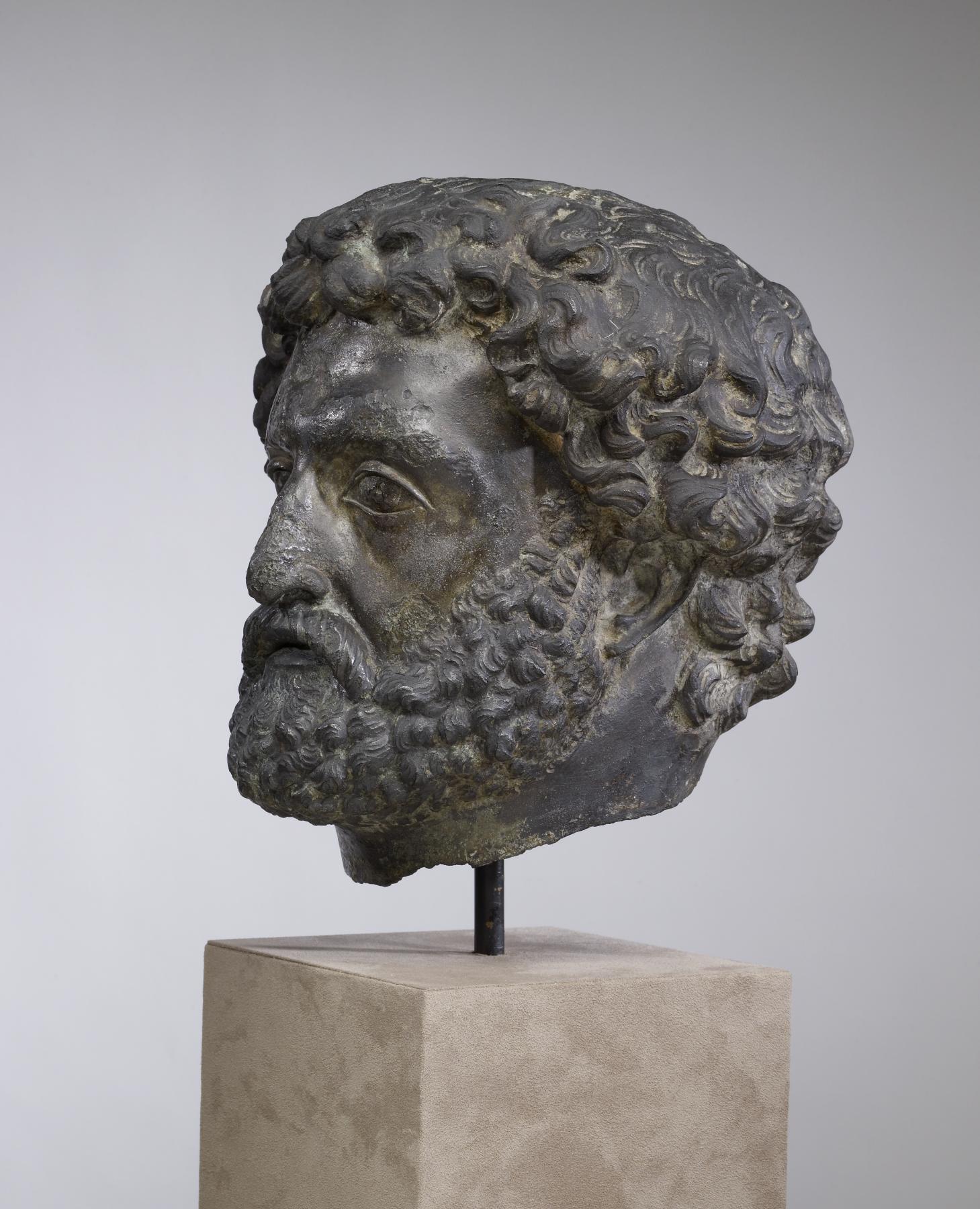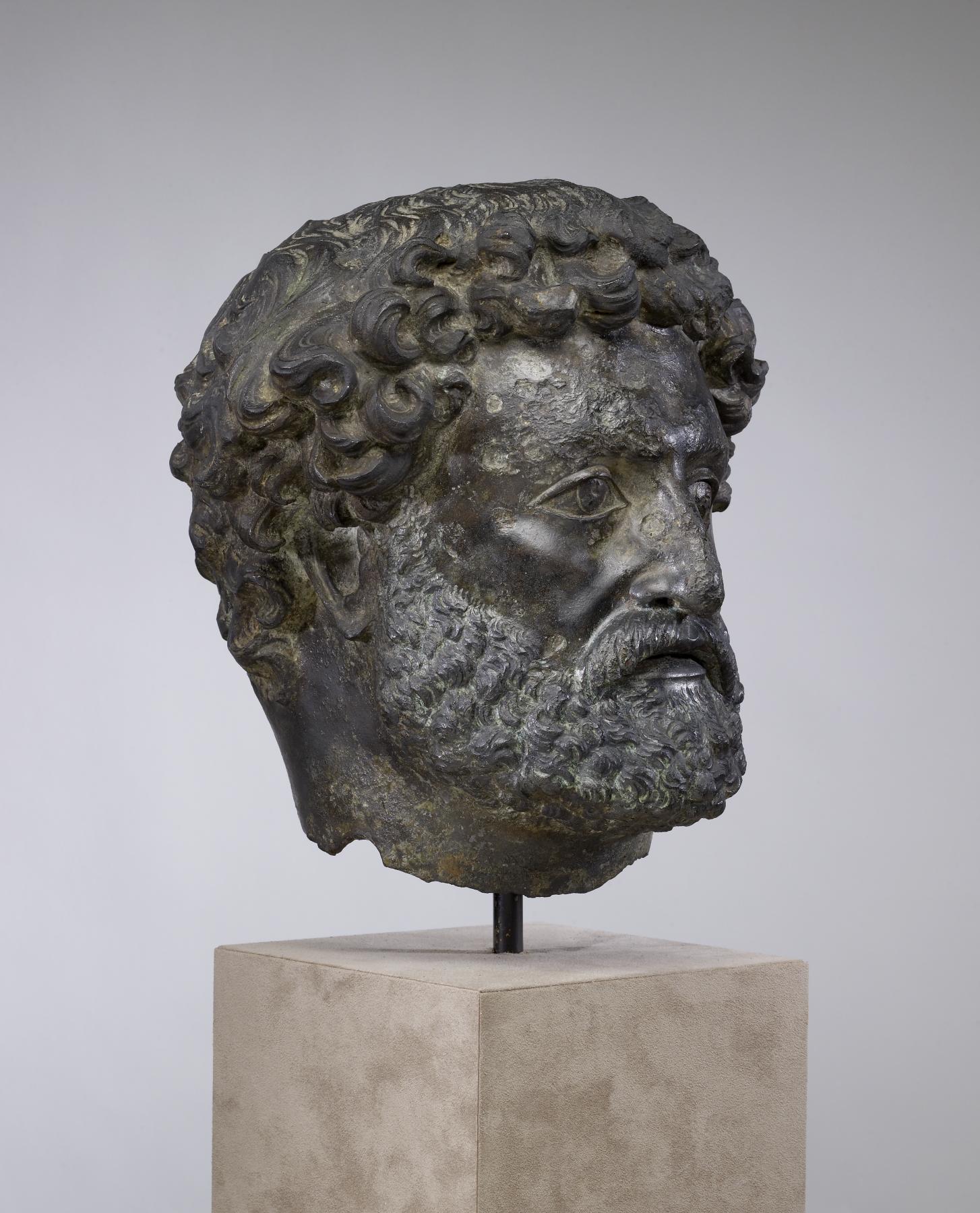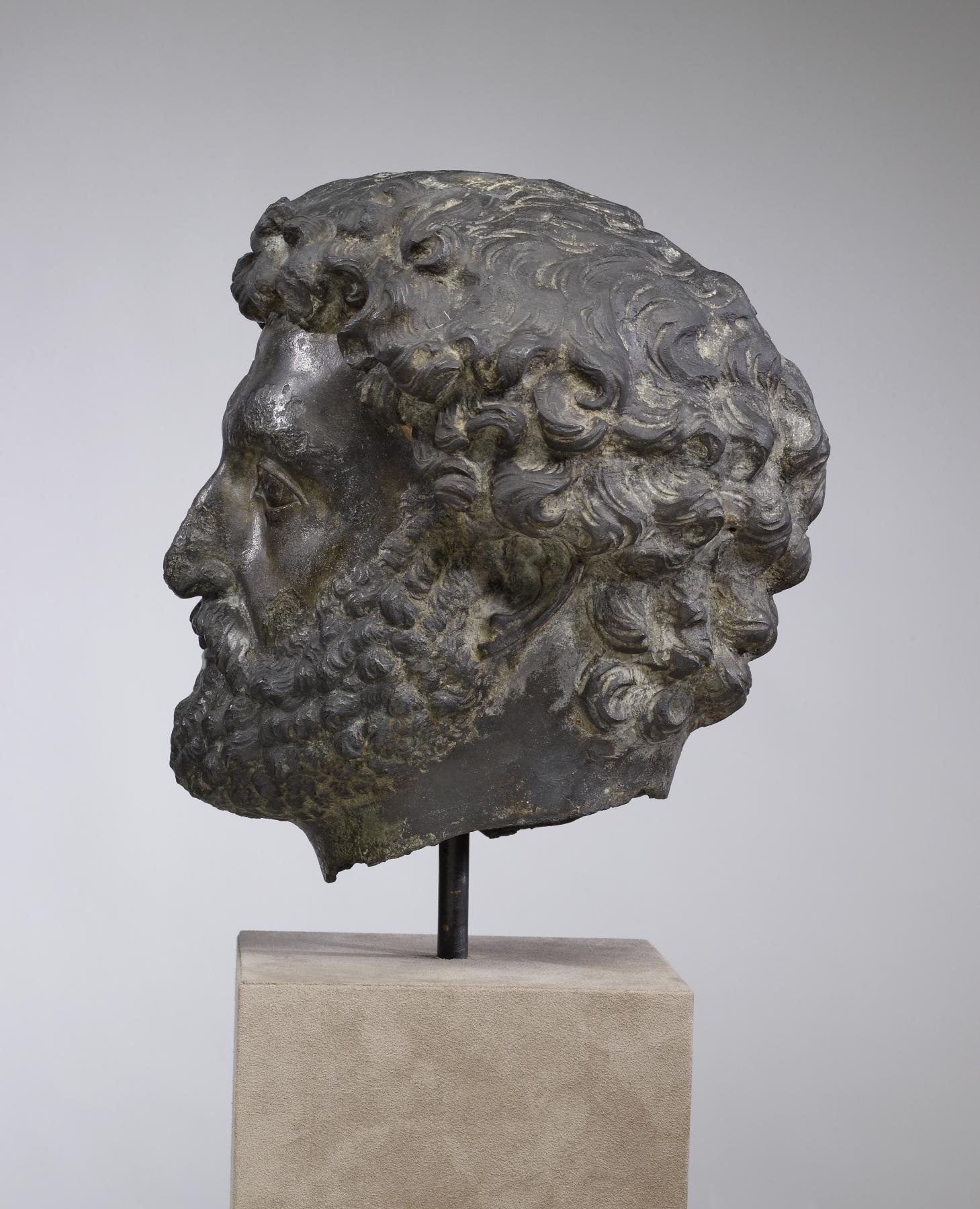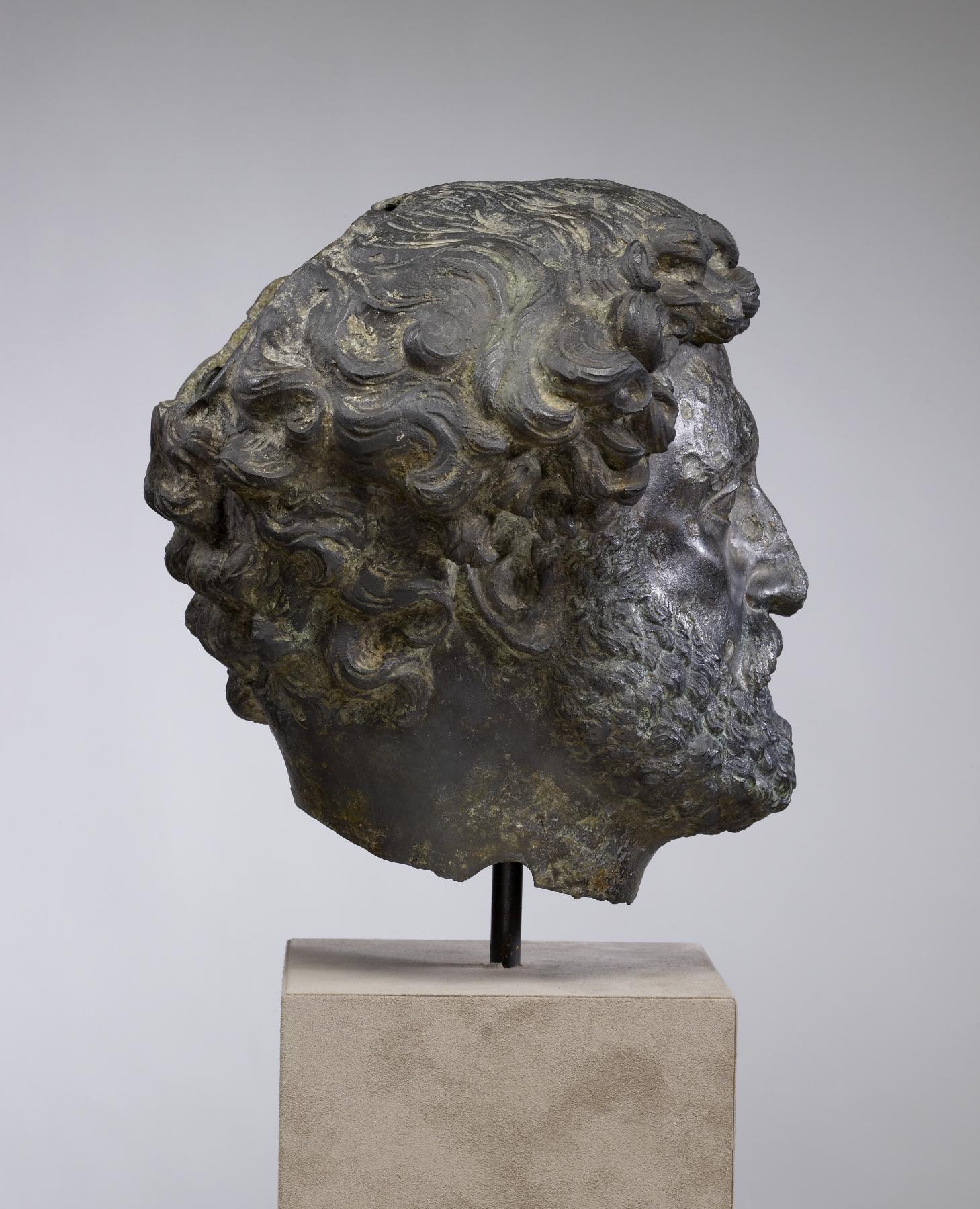Private Portrait of a Man
(Roman Empire )
Some of the finest examples of Roman sculpture are the outstanding portraits that commemorated important individuals. The Roman portrait tradition began with the life-like statues of the Republican period (509-27 BCE). These realistic portraits emphasized the age and experience of the respected elders of the family. In Imperial times (27 BCE-410 CE), the emperor's portrait was copied and displayed in public places throughout the empire, and the manner in which he chose to be portrayed had an enormous impact on the style and fashion of the portraits, both public and private, of his contemporaries.
This magnificent portrait adopts features from images of emperors, including the facial structure and beard typical of Hadrian (reigned 117-38 CE) and the thick locks of hair at the temples characteristic of his successor, Antoninus Pius (reigned 138-61 CE). His weary features and unfocused gaze are typical of portraits of the period, which have a sense of inner reflection and withdrawal from worldly cares.
Provenance
Provenance (from the French provenir, 'to come from/forth') is the chronology of the ownership, custody, or location of a historical object. Learn more about provenance at the Walters.
Giovanni Dattari, Cairo, by 1912, by purchase; Sale, Hotel Drouot, Paris, June 17, 1912, no. 401; Maurice Nahman, Cairo, [date and mode of acquisition unknown]; Joseph Brummer, New York, 1926, by purchase [Brummer inv. no. P3666; Henry Walters, Baltimore, 1928, by purchase]; Walters Art Museum, 1931, by bequest.
Exhibitions
| 1998-2001 | Highlights from the Collection. The Walters Art Gallery, Baltimore. |
| 1995 | The Allure of Bronze. The Walters Art Gallery, Baltimore. |
Conservation
| Date | Description | Narrative |
|---|---|---|
| 7/20/1970 | Treatment | cleaned |
| 6/1/1994 | Examination | condition |
| 11/15/1996 | Treatment | cleaned; other |
Geographies
Italy, Rome (Place of Origin)
Measurements
11 x 10 x 11 1/2 in. (27.9 x 25.4 x 29.2 cm)
Credit Line
Acquired by Henry Walters, 1928
Location in Museum
Accession Number
In libraries, galleries, museums, and archives, an accession number is a unique identifier assigned to each object in the collection.
In libraries, galleries, museums, and archives, an accession number is a unique identifier assigned to each object in the collection.
23.66














